ASRock DeskMini Z370 GTX1060 Review: A Compact Coffee Lake Gaming PC
by Ganesh T S on June 12, 2018 10:00 AM EST4K HTPC Credentials
The DeskMini Z370 GTX1060 comes with two fans with a noise profile that might be annoying for some users. Thankfully, the BIOS allows tweaking the fan curves, if needed. While the premium Zotac systems such as the ZBOX MAGNUS EN1080K and EN1080 made for decent home-theater PCs with their liquid cooling system, the same can't be said for the DeskMini Z370. The unit is not for the discerning HTPC enthusiast who is better off with a passively cooled system. In this section, we provide a detailed analysis of the DeskMini Z370's 4K HTPC credentials. All the testing in this section was done with the PC hooked up to a TCL 55P607 4K HDR TV through a Denon AVR X3400H receiver using the system's HDMI 2.0 port driven by the GTX 1060. Even though the system comes with a HDMI port driven by the integrated GPU, it is limited to 4Kp30 rendering it unsuitable for 4K HTPC duties.
Refresh Rate Accuracy
Starting with Haswell, Intel, AMD and NVIDIA have been on par with respect to display refresh rate accuracy. The most important refresh rate for videophiles is obviously 23.976 Hz (the 23 Hz setting). As expected, the ASRock DeskMini Z370 GTX1060 has no trouble with refreshing the display appropriately in this setting.
The gallery below presents some of the other refresh rates that we tested out. The first statistic in madVR's OSD indicates the display refresh rate.
It was trivial to create custom resolutions in the NVIDIA Control Panel. This enabled us to test out 25 Hz and 50 Hz refrshes too.
Network Streaming Efficiency
Evaluation of OTT playback efficiency was done by playing back the Mystery Box's Peru 8K HDR 60FPS video in YouTube using Microsoft Edge and Season 4 Episode 4 of the Netflix Test Pattern title using the Windows Store App.
The YouTube streaming test played back the 4K non-HDR version (VP9 video and Opus audio), while the Netflix one delivered the 16 Mbps HEVC HDR10 version (confirmed by the debug information)
The graph below shows the power consumption at the wall and the GPU loading parameters for streaming the YouTube video with the HDR mode on. In the steady state, the GPU core load is around 10%, while the decoder (VPU) load is slightly more than 20%. The GTX 1060 is the major contributor to the system power in this workload, taking up around 50W out of the 60W (approx.) at-wall power consumption.
A similar graph for the Netflix streaming case is also presented below. Manual stream selection is available (Ctrl-Alt-Shift-S) and debug information / statistics can also be viewed (Ctrl-Alt-Shift-D). Statistics collected for the YouTube streaming experiment were also collected here. An important point to note here is that the 4K streams are enabled only if the HEVC Video Extensions from Device Manufacturer app is installed from the Microsoft Store.
It must be noted that the debug OSD is kept on till the stream reaches the 16 Mbps playback stage around 70 seconds after the start of the streaming. In the steady state, the GPU loading (both core and VPU) is around 35%. The at-wall power consumption is around 75W, with the GTX 1060 being the major contributor (around 55W).
Decoding and Rendering Benchmarks
In order to evaluate local file playback, we concentrate on Kodi 17.6 and VLC 3.0.3 (for the casual user) and madVR (for the HTPC enthusiast). Under madVR, we decided to test out only the default out-of-the-box configuration. We recently revamped our decode and rendering test suite, as described in our 2017 HTPC components guide.
madVR 0.92.14 was evaluated with MPC-HC 1.7.16 (unofficial release) with its integrated LAV Filters 0.71-25. The suite was processed twice - once with the video decoder set to D3D11 mode and another time with the default DXVA2 (Native) setting.
We see the VP9 Profile 2 video getting played back without hardware acceleration (the at-wall power consumption is around 100W) in both modes. Other streams have no trouble in taking advantage of the GTX 1060's media decoding capabilities. The GPU power consumption ranges from the high teens for the 1080p24 AVC stream to the high 30s for the 1080i60 VC1 clip. The core / VPU loading numbers max out around 55% for the 4Kp60 HEVC 10-bit stream. The at-wall power consumption stays between 40W and 75W depending on the codec, resolution, and frame rate of the clip.
In general, we see the DXVA2 Native setting being slightly leaner on resources compared to the D3D11 mode. One of the cool features in both these modes (with madVR in default state) was the automatic switching to and back from HDR based on the content being played back. We don't have that with either Kodi or VLC on the PC platform currently.
Processing the same set of streams with Kodi 17.6 shows the GTX 1060 core load max out slightly south of 60% for the interlaced 60 fps streams. The VPU load, on the other hand, maxes out around 55% for the 4Kp60 HEVC clips. The at-wall power hits an average of around 90W for the software decode of the VP9 Profile 2 video. We see two distinct at-wall power consumption numbers - 40W for most streams, and around 55W for the 4Kp60 videos. The GTX 1060 accounts for around 40 - 50% of the at-wall number.
VLC's behavior differs from Kodi. The GPU load is high for streams that need to be upscaled after decoding (hitting as high as 50% for the sub-4K clips). The VPU load for the 1080p and lower resolution streams stays well below 20% (thogh the 1080p60 AVC clip makes it go slightly above 25%). For th 4K clips, the higher frame rate ones hit the 50% mark, while the others are around 25% to 40%. The at-wall power is around 90W for the non-accelerated VP9 Profile 2 video, and 40W to 55W for the others (similar to the Kodi case). The power consumption of the GTX 1060 is lower with VLC, compared to Kodi.
Moving on to the codec support, the GTX 1060 is a known quantity with respect to the scope of supported hardware accelerated codecs. DXVA Checker serves as a confirmation.
The only odd aspect is the absence of VP9 Profile 2 hardware decoding (used in the YouTube HDR streams).
The GTX 1060 does not have the protected AV path necessary for UltraHD Blu-ray playback. Even though the BIOS allows end users to enable SGX, the absence of PAVP is a disappointment for HTPC enthusiasts. The system also sports a HDMI output from the integrated GPU (which does have PAVP). However, it is restricted to 4Kp30, and is not a good fit for HTPC purposes.








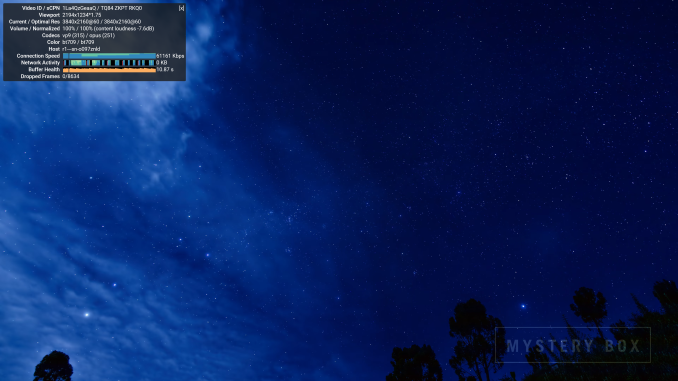
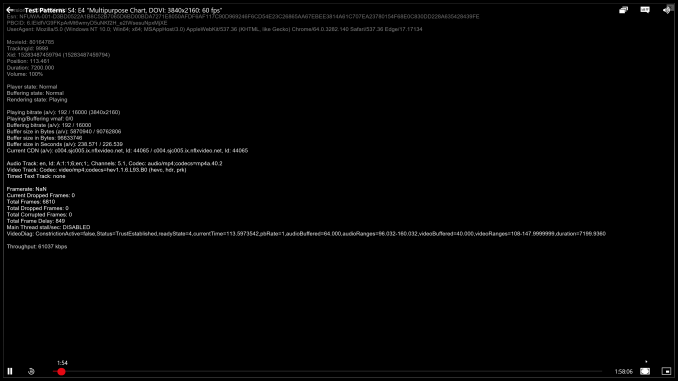
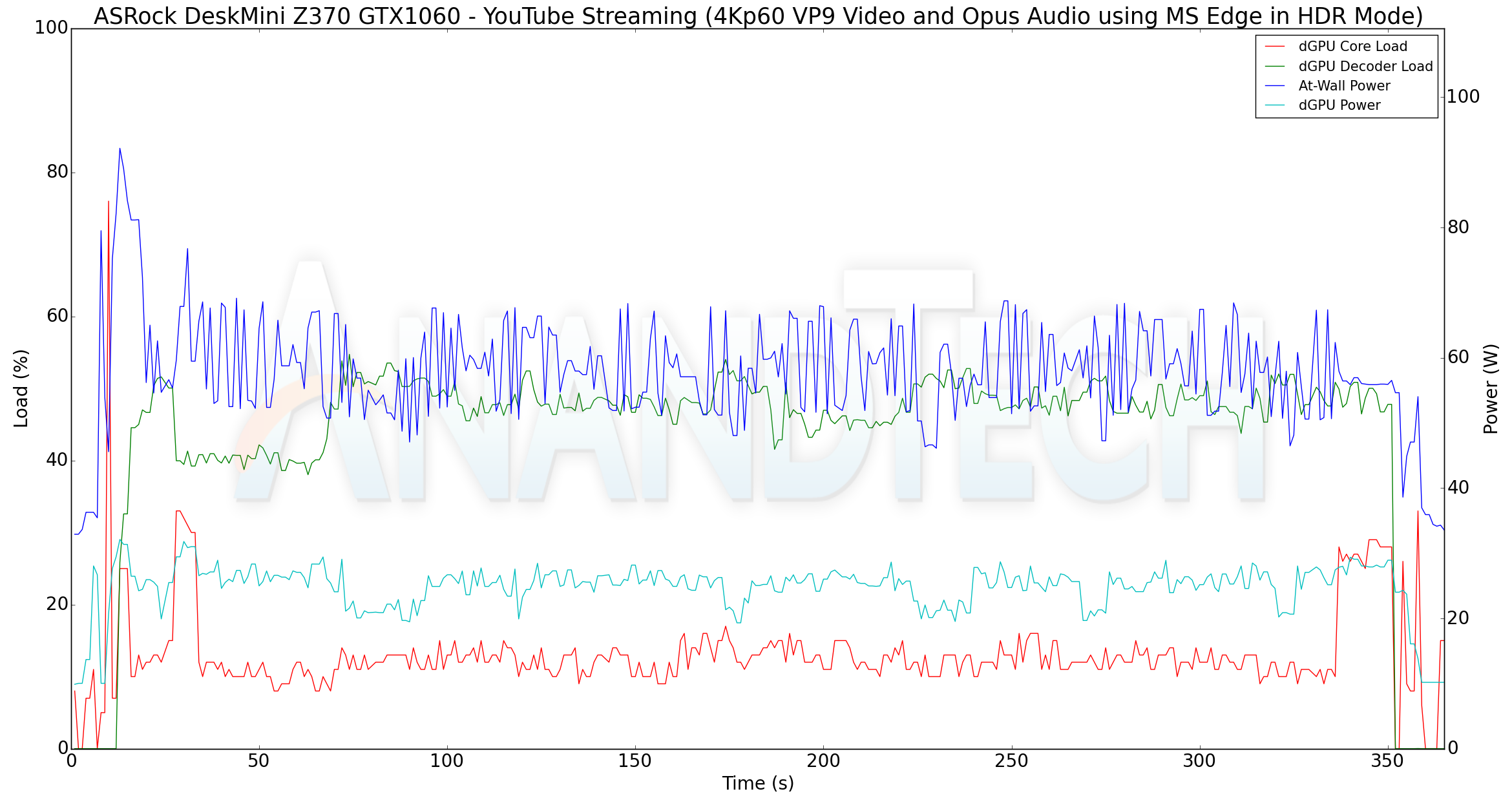
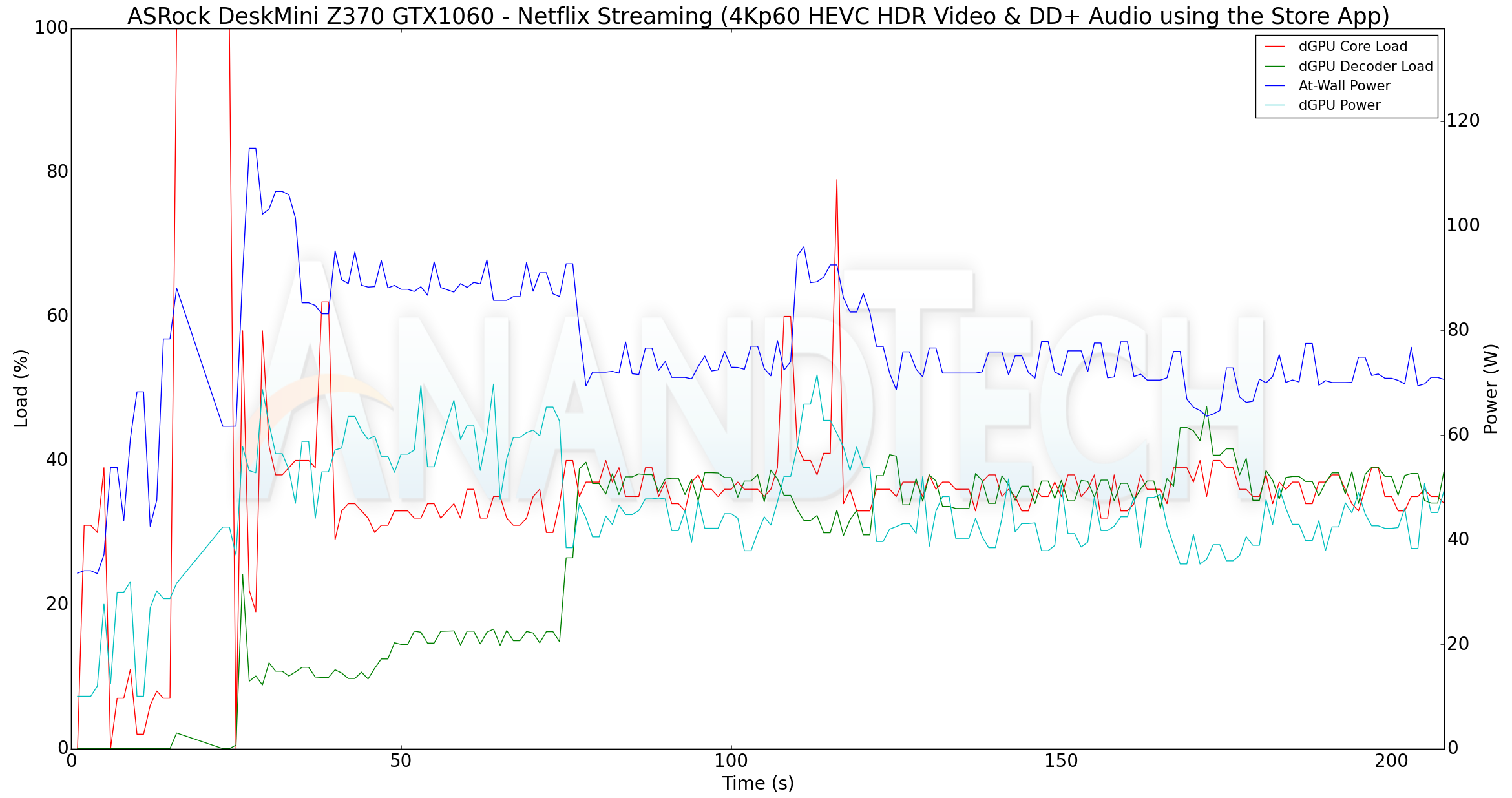


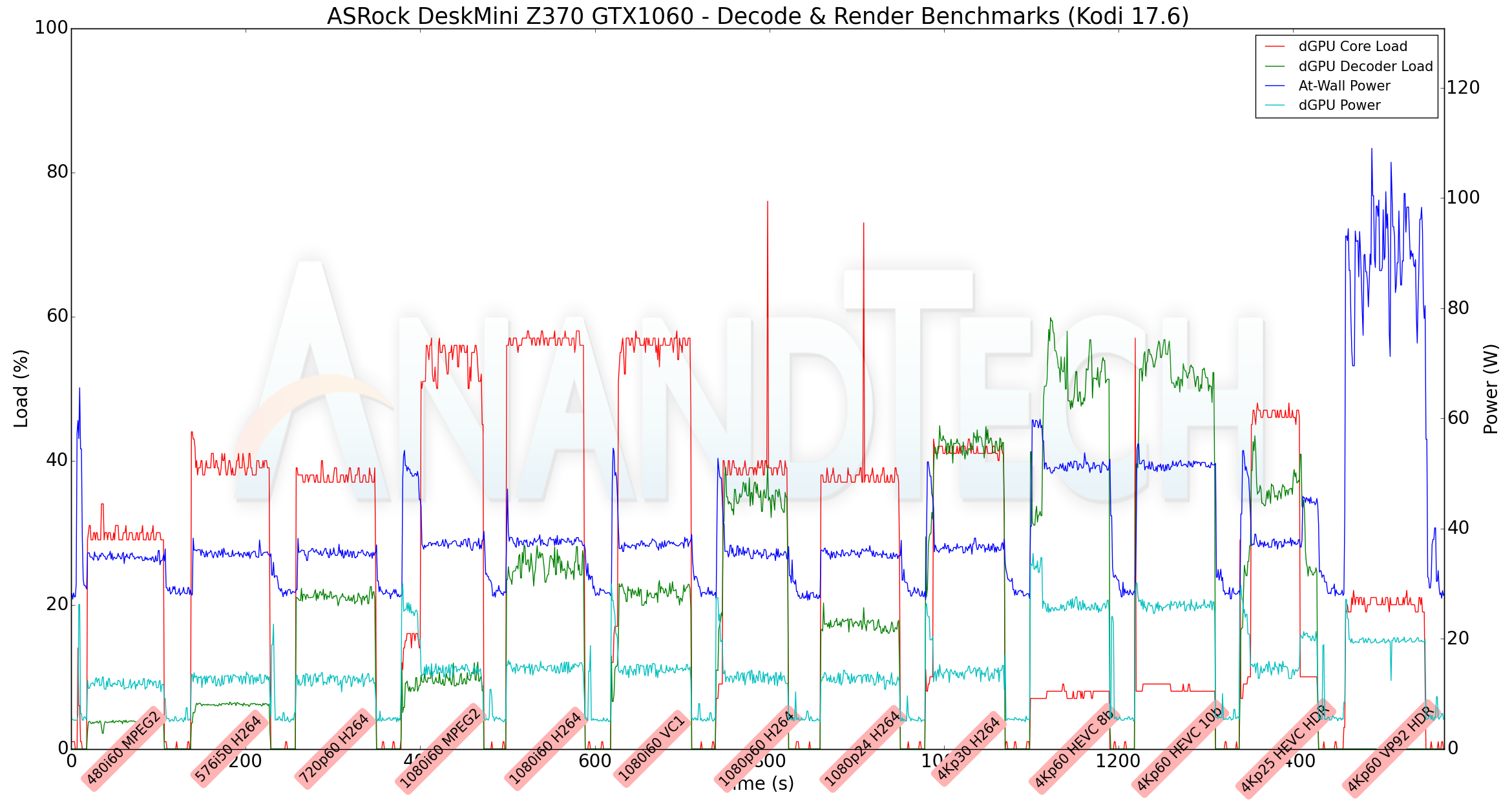
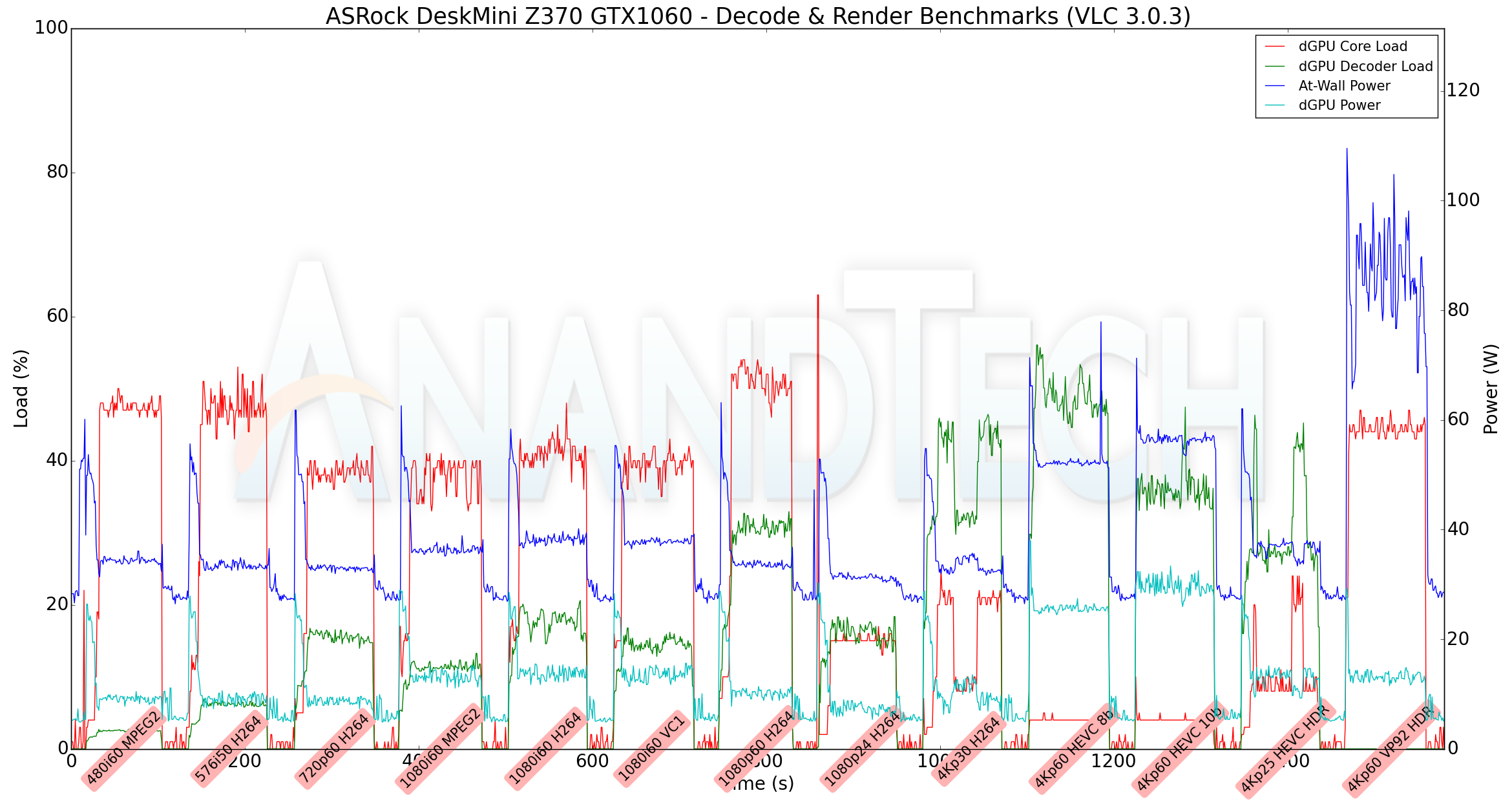
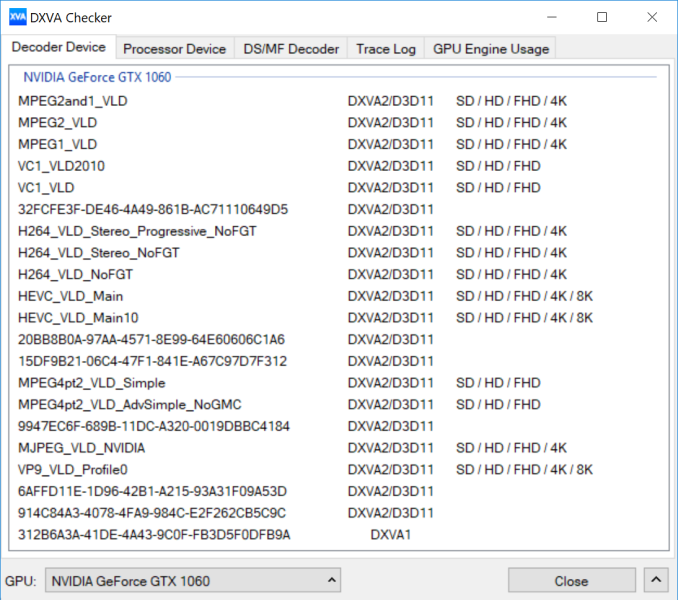








20 Comments
View All Comments
Death666Angel - Wednesday, June 13, 2018 - link
I haven't heard of your problem before. I thought MXM connector was standardized. But I do know that many laptop brands have whitelisted only some GPUs. Some Clevo units are unlocked other versions or manufacturers need custom modded BIOSes. That, along with the increased cost is a turn off for me. Better to get a 22cm 1080TI, which costs as much as 1070 MXM and has all the warranties and guarantees you need.iranterres - Tuesday, June 12, 2018 - link
Is it a PC or a power supply? LOLjtd871 - Tuesday, June 12, 2018 - link
It's already been done. A link to the relevant project is https://smallformfactor_DOT_net/forum/posts/40583/Sorry for the DOT, apparently the comment system thinks my hyper link is spam.
Ratman6161 - Tuesday, June 12, 2018 - link
Wow. I guess small costs!Pork@III - Tuesday, June 12, 2018 - link
In gallery: many thumbnails with no connection to big images!ganeshts - Tuesday, June 12, 2018 - link
We have been facing some issues with the images server. It will be resolved soon.fackamato - Tuesday, June 12, 2018 - link
Are there noise comparisons (idle/video/full load)?MadAd - Wednesday, June 13, 2018 - link
Yay! More SFF! Personally its a bit too S for me but we need more of this. If I never saw another ATX review again it would be too soon. Unless we wish to additionally house our cat only specific edge cases actually needs ATX these days.strayan - Wednesday, June 13, 2018 - link
Is this system DisplayPort++ compatible for the diminishing number of us who still use passive displayport to vga cables to connect to CRT monitors?venkateshch9505 - Wednesday, July 11, 2018 - link
ACMarket for PC: There are very few applications in the Google PlayStore that will let you allow some of the applications to download for freehttps://acmarket.xyz/category/blog/
https://acmarket.xyz/ios-iphone-ipad/
https://acmarket.xyz/category/apk-store/